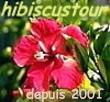-

"hibiscustour", three separate sites -
Islands and lagoons New Caledonia, Polynesia (part). -

Curiosity. Things, amazing, science, society.. -

Ideas perso. Household, Practical life, D.I.Y, Computering..
 
but reality |
  |
![]()
No matter valuable shells are, collecting shells at the edge of the shore is a sheer pleasure; there are some very tiny pretty and they
will enjoy your children or grand children. Always have a small plastic pocket with you.
|
|
It's a true pleasure to seek small shells like those of the photograph, but to have some more beautiful, you will hardly have other choice but going in the stores. Below, you will find a first regular selection. It is necessary to add the nautilus to it, now very widespread. See also lagoon life. |
|
|
One finds small works rather complete on the subject ( the shells.
On the spot, the choice is more significant and is more specific.
1 harpe, 2 troca nacrier (cleaned with acid), 3 porcelain currency, 4 textile cone 5 araignée, ptérocère (spider).
19 small murex root 20 nacre (mother-of-pearl ?), bivalvular containing an olive 21 and one small porcelain deer 22, 23
murex.
|
| Stamps from New Caledonia(cones)
|
|
|
|
|
Some Murex, of wich the more common. Sizes can vay from a few centimeters to 15 / 20 cm |
black murex (stamps from new Caledonia).
Générally small. |
Venus comb |
| Porcelains. These shells are so beautiful that many people doubt of their animal origin and wonder rather about a possible artistic production of the man. Their "porcelain" name, completely justified, adds to confusion. The doubt is thus completely legitimate and I acknowledge to have been occasionaly myself very dubitative. | At a time of a diving near the reef, in only two or three meters of water, three white traces drew my attention. I was naturally almost “the nose on them”, if not I would not have seen anything. It was a group of three white, extremely rare porcelains in New Caledonia, covered almost completely by their fine coat beige-greyish, which let appear only three narrow stripes on their back. I never see another one, and so didn't my friends. | Alive animals
(stamps of New Caledonia, aquarium of Noumea, 1980). Dolium, the animal is out its shell. The shell of the mine is 12 cm length. |
Porcelain. Its
“coat” get out by by the notched slit which is at the lower part, and goes
up partially bond to its sides (yellow and yellow orange part) Niger Porcelain (from English nigger, negro, black). |
|
|
Left hand, a private recollection. The two large shells of the bas are commonly called "casques" in french (helmets); some other large shells are not shown here, such as conches, in which tahitians blow to produce a sound. Largest ones are certainly those known for their use at the entry 
Very big ones have almost disappeared. This shell which seems rather rough is an imposing mass of nacre, having learned that while visiting a lapidary, around Noumea, towards the Mont Dore, which produces large pearl objects, of which this egg that was offered to me by Patricia, a friend of Noumea. Originally consumed by the native clams are now farmed for their marketing: they adorn the exotic aquariums. |
|
Giving life to a shell window collection with woden adorned fishes, postcards, and a sheet of paper coated with sand (decoration leisure shops) |
|
|
![]()

|